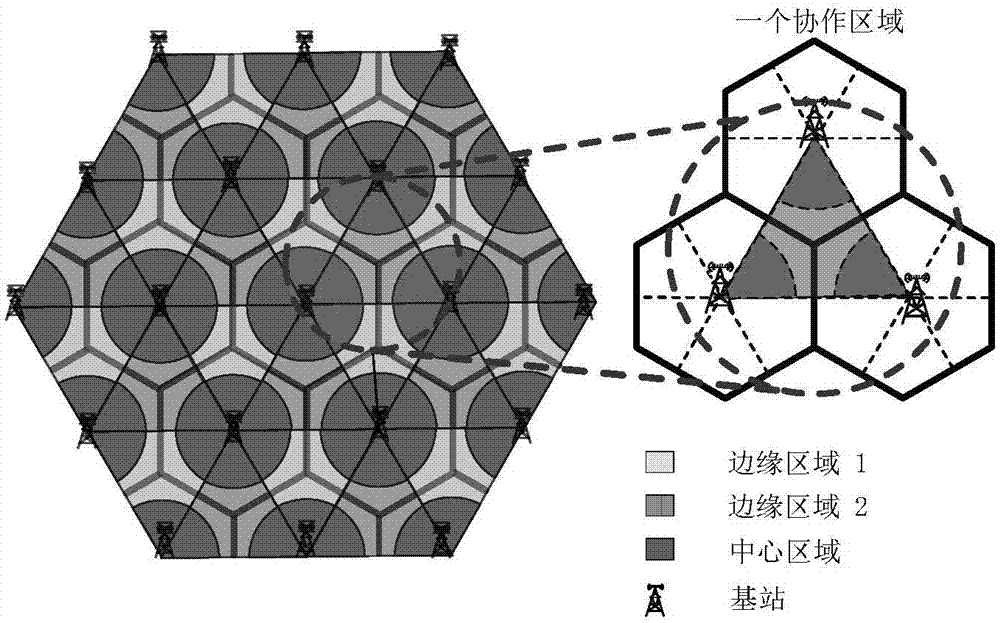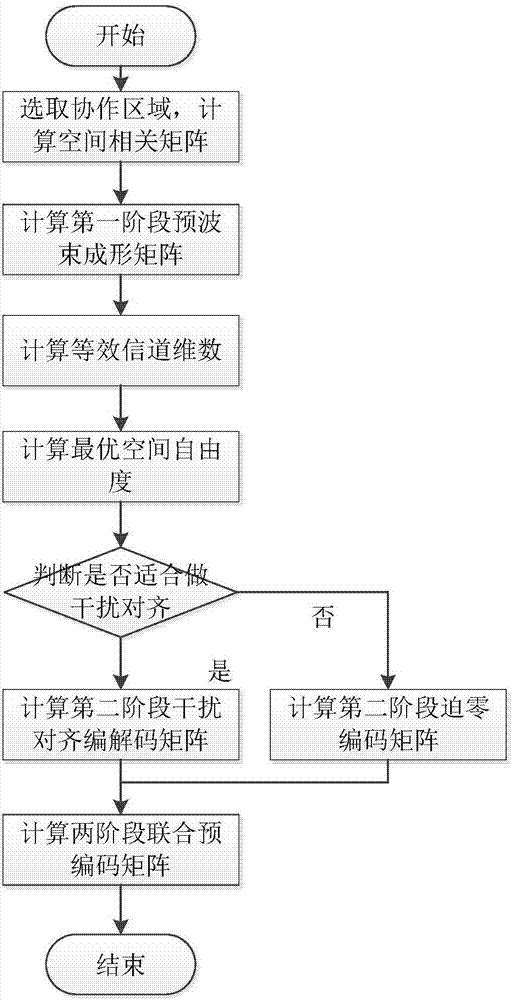Inter-cluster interference elimination method based on airspace fine intensity high fractional beams
A technology of inter-cluster interference and strength, applied in the directions of space transmit diversity, diversity/multi-antenna system, radio transmission system, etc., can solve the problems of limiting the transmission rate of edge clusters, reducing the performance of precoding algorithm, interference, etc., to eliminate intra-cluster Effects of interference, increased throughput, and increased transmission rate
- Summary
- Abstract
- Description
- Claims
- Application Information
AI Technical Summary
Problems solved by technology
Method used
Image
Examples
Embodiment Construction
[0035] The present invention will be further described below in conjunction with the accompanying drawings.
[0036] Such as figure 1 As shown, the present invention is applicable to a multi-cell cellular network scenario. One base station is configured at the center of each cell, and every three adjacent base stations form a cooperation area. Such as figure 2 As shown in , select a triangular cooperation area served by three adjacent base stations, where each cell center is equipped with a base station, denoted as BS i , i={1,2,3}, each base station installs N t Antennas distributed in a uniform array, N t >>1, the distance between antenna elements is τ. There are 5 user clusters in the area, denoted as C i , j={1,2,3,4,5}, there are 4 installations N in each cluster r user of the root antenna. The radius of the jth cluster is R j , the distance from the i-th base station to the j-th cluster is
[0037] refer to figure 2 with image 3 , the implementation steps...
PUM
 Login to View More
Login to View More Abstract
Description
Claims
Application Information
 Login to View More
Login to View More - R&D
- Intellectual Property
- Life Sciences
- Materials
- Tech Scout
- Unparalleled Data Quality
- Higher Quality Content
- 60% Fewer Hallucinations
Browse by: Latest US Patents, China's latest patents, Technical Efficacy Thesaurus, Application Domain, Technology Topic, Popular Technical Reports.
© 2025 PatSnap. All rights reserved.Legal|Privacy policy|Modern Slavery Act Transparency Statement|Sitemap|About US| Contact US: help@patsnap.com



